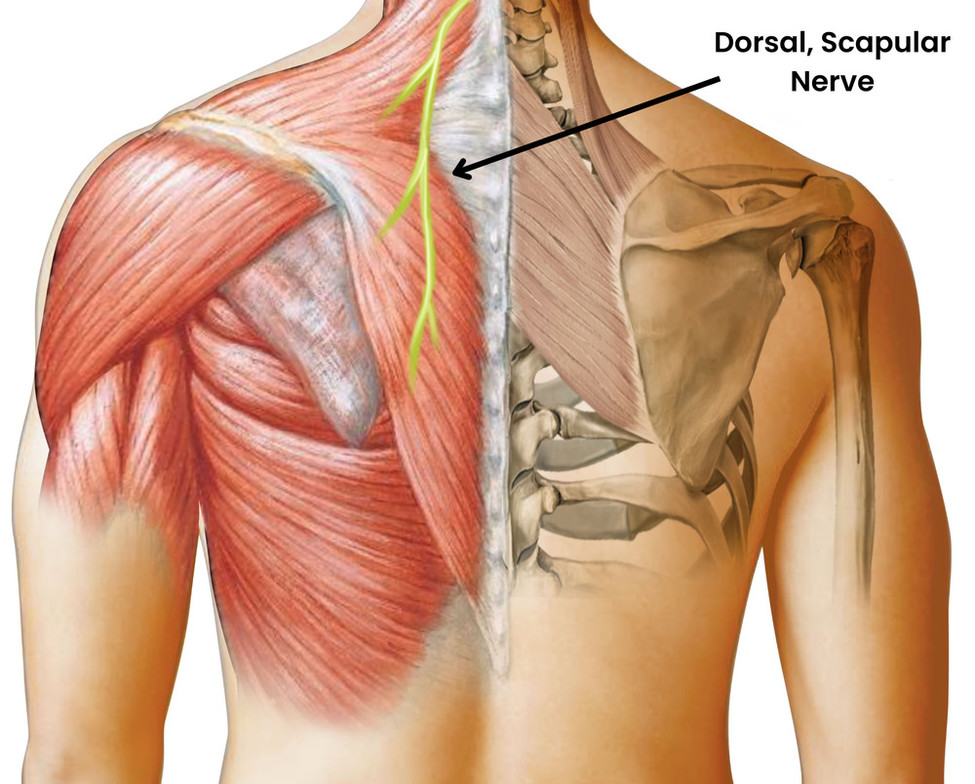
In both our general population patients and our athletes, we noticed an ongoing trend of "tightness in between the shoulder blades" or a chronic "knot" that won't go away. It's always interesting to hear this from patients because of the ways we hear how they try and mange it.
It's always, I smashed it with a lacrosse ball, tried to "pop" it with a foam roller, or had their spouse hug them and pick them up to try and "crack" it. The best part is that we always say "it relieves it for some time but then it comes back doesn't it?" and the answer is always a "Yes, how'd you know?"
Well...it kind of is our job to know things like this. So let's review why that chronic knot or tightness in between your shoulder blades most likely is NOT coming from that area. What that means is that the area in between your shoulder blades is the symptomatic part, but it's not what's causing the symptoms.
Stay with me now...
Most people know that sciatica is a referral of pain from the lower back into the butt and back of the leg. You knew that too, right?
Well, imagine that same exact principle, but from your neck!
The referral patterns of neck pain are first into the shoulder blades then down and out towards the arms and fingers. Whether it is a disc or nerve root issue or more of a facet-mediated referral, we can help. The major key is the proper diagnosis.
What most don't realize is that their cervical spine is a mobile structure that they don't focus on strengthening or keeping mobile, but force it through ALL sorts of ranges of motion. For example, a volleyball player is constantly looking up and forcing the joints of the neck into extension. A weightlifter is barbell pressing overhead and all that load going overhead is going through the cervical spine.
The dorsal scapular nerve is a nerve the comes from the neck around C3-C4 and then traverses down in between the shoulder blades, almost feeling like it's under the shoulder blade. The irritation of this can result in ongoing muscle tightness, but the muscle isn't actually affected. The nerve root is, which then results in the excessive tightness.
Another option is facet-mediated referral. Facet is a fancy word for the joint of the spine. When a joint of the cervical spine is irritated or affected, it can refer broadly to an area and is typically worse with extension and rotation.
Now that you understand how this occurs, now it's important to know what can help!
How we treat this in our office:
- Cervical and thoracic spine manipulation
- Manual therapy to surrounding musculature to enhance mobility
- Winback TECAR therapy to reduce symptoms, reduce inflammation, and speed up the cellular process
- Postural kinesio taping techniques
- Physiotherapy aimed at enhancing cervicothoracic junction mobility and cervical spine stability
The exercises are quite simple and can be performed anywhere. You can find these exercises on our Instagram @strengthspinechiro
If you're dealing with these symptoms, trust us, you don't have to deal with the aches and pains anymore. It's time to learn how to move better and feel better. Schedule your FREE Discovery Visit today using the link attached.
Here, we get an opportunity to learn more about each other and how we can help you. Best part is, it's free and if we cannot help, we'll help you find the best people to help.
